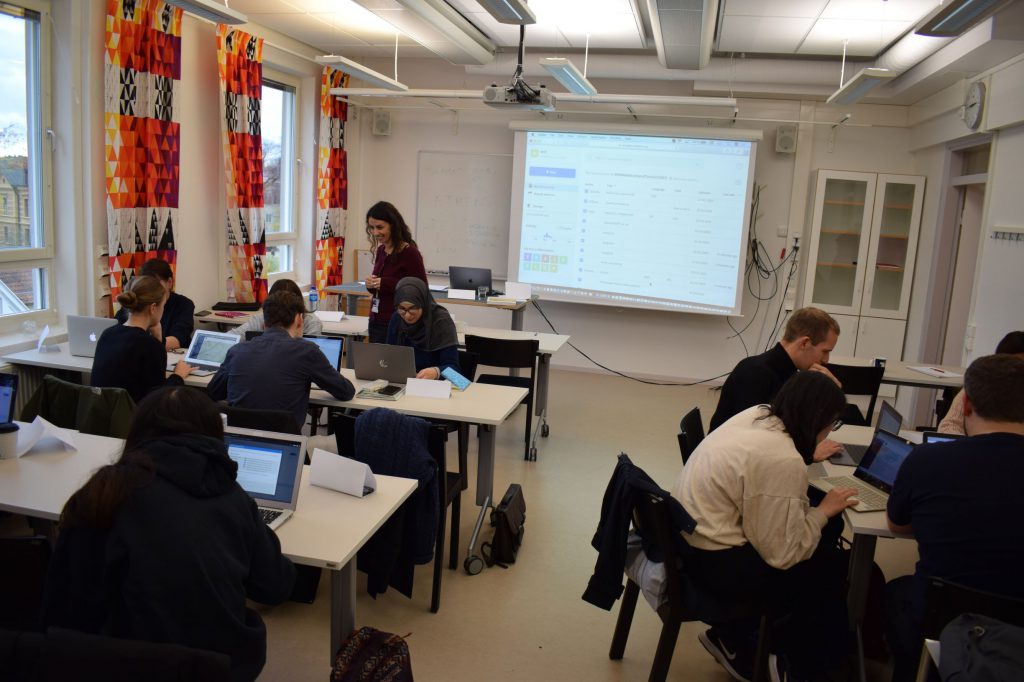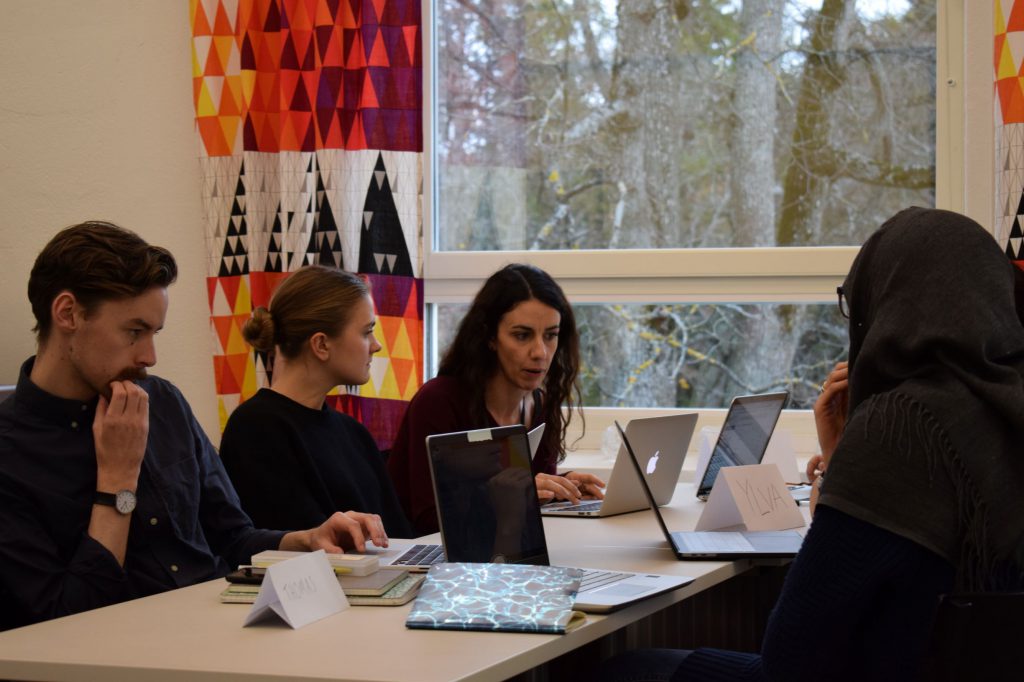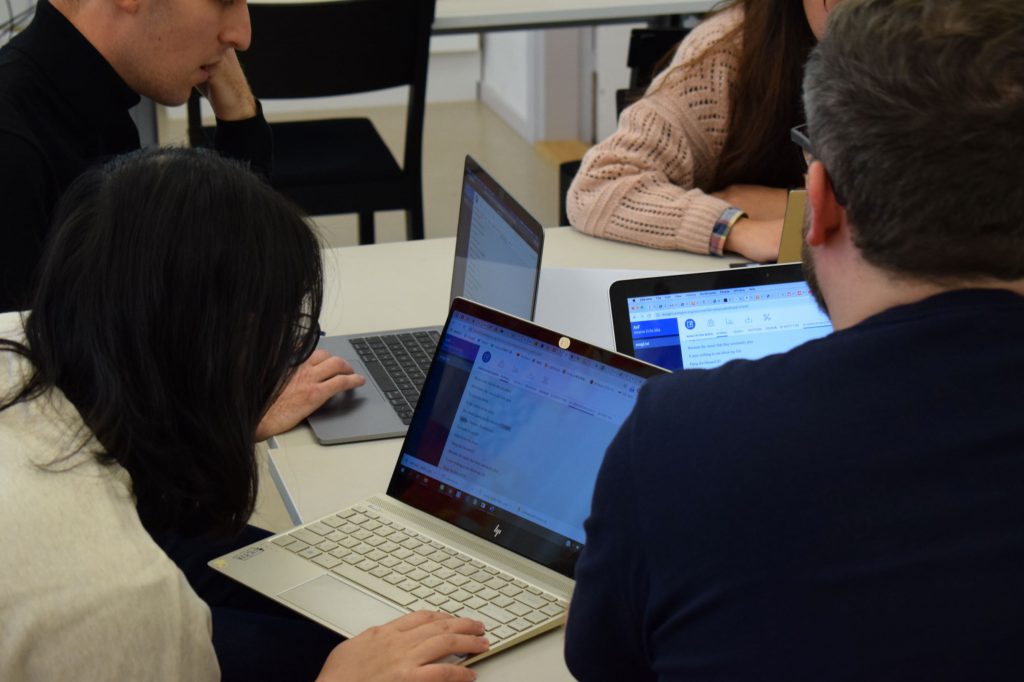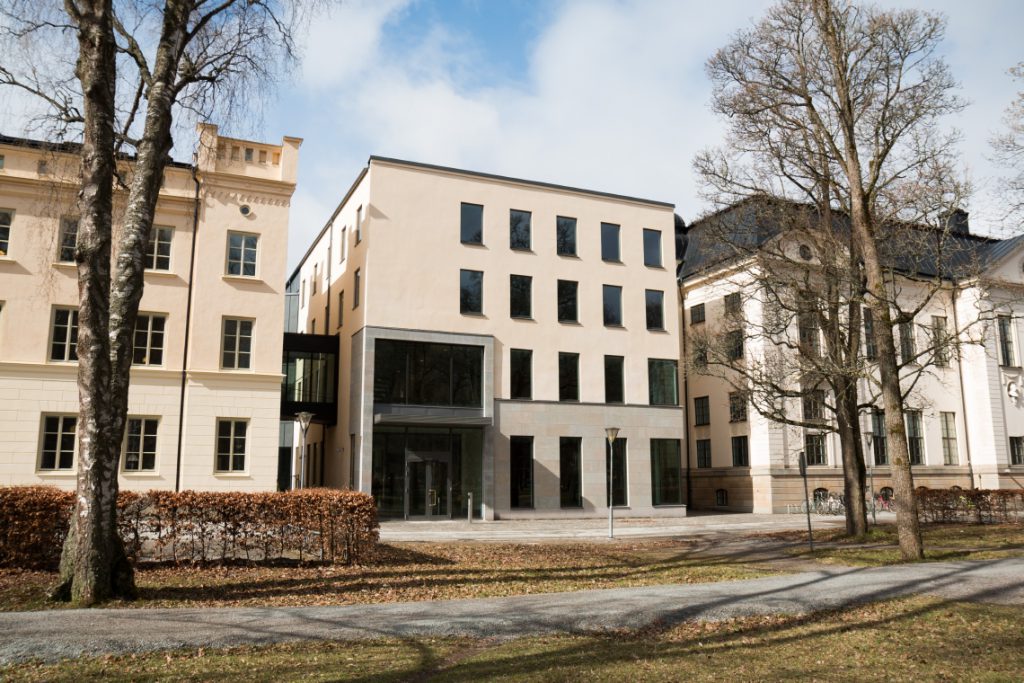How do large AI models like ChatGPT work? What is the difference between machine learning and AI? What can we say about the environmental and work ethical impacts of current large language models? These were some of the questions discussed at the seminar “AI and algorithms”, which is a part of the course “Tools and Methods in Digital Humanities: Critical Encounters”. This course is the second course in the Master’s programme in Digital Humanities, and it introduces the students to a selection of key tools and methods used in digital humanities. The course consists of seminars and practical workshops in which students learn to critically approach and examine tools used in various tasks in the scholarship. These include optical and handwritten character recognition, textual and visual analysis, programming, and AI-based tools.
At this particular seminar, students discussed the implications of algorithms and AI models and applications for digital humanities scholarship and contemporary societies more broadly. We investigated questions related to biases and limitations in AI, power relations embedded and sustained in the applications, but also more concrete questions about the role of natural resources or human labour behind AI solutions. As Kate Crawford writes in her Atlas of AI, “[e]very dataset used to train machine learning systems, whether in the context of supervised or unsupervised machine learning, whether seen to be technically biased or not, contains a worldview.“[1]
The seminar concluded with practical exercises, where the students examined how large language models, in this case ChatGPT, could be viewed as tools used in digital humanities scholarship. The student groups worked on different tasks that could be part of an actual digital humanities research workflow. Some students explored named-entity recognition and linking, while another group worked on OCR post-correction, and some focused on sentiment and stance analysis. The exercises concretely demonstrated some key challenges related to AI-assisted knowledge production, including limitations in the transparency of the training data, but also demonstrated the potential for incorporating AI and machine-assisted steps in research workflows.
This AI-themed week of the course continued the following day with a workshop on visual analysis with Amanda Wasielewski. At the workshop, the students took another critical perspective on AI by focusing on the theme of computer vision. This time, the students conducted analysis with images they had selected for the workshop, using the OpenCV library and example notebooks prepared for the workshop. The skills, knowledge, and critical perspectives on both text and visuals, and digital cultural heritage more broadly, are among the themes that we engage with and learn about in the DH MA programme.
[1] Crawford, Kate. Atlas of AI : Power, Politics, and the Planetary Costs of Artificial Intelligence. New Haven: Yale University Press, 2021, p. 135.





